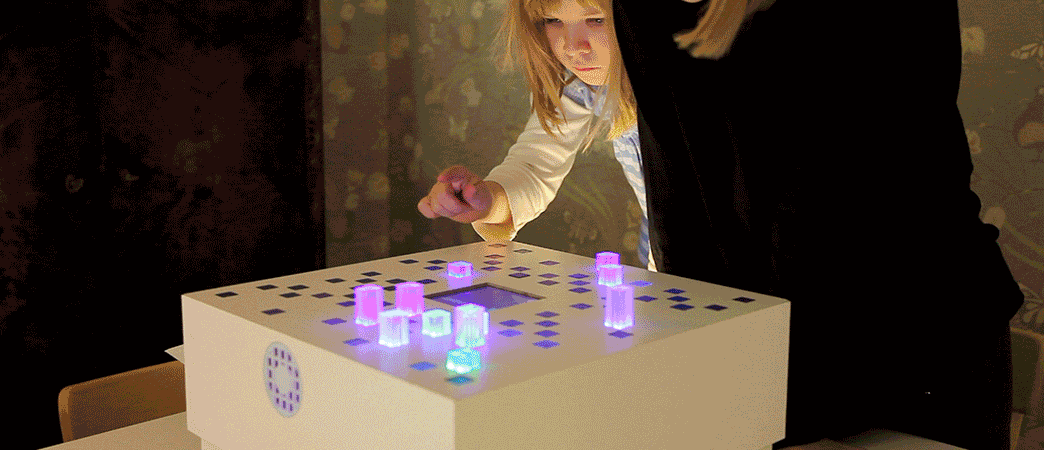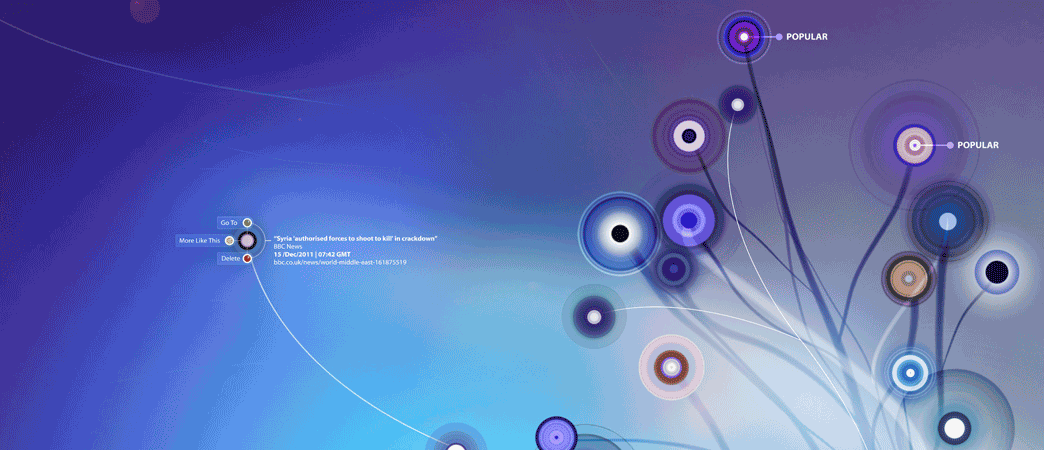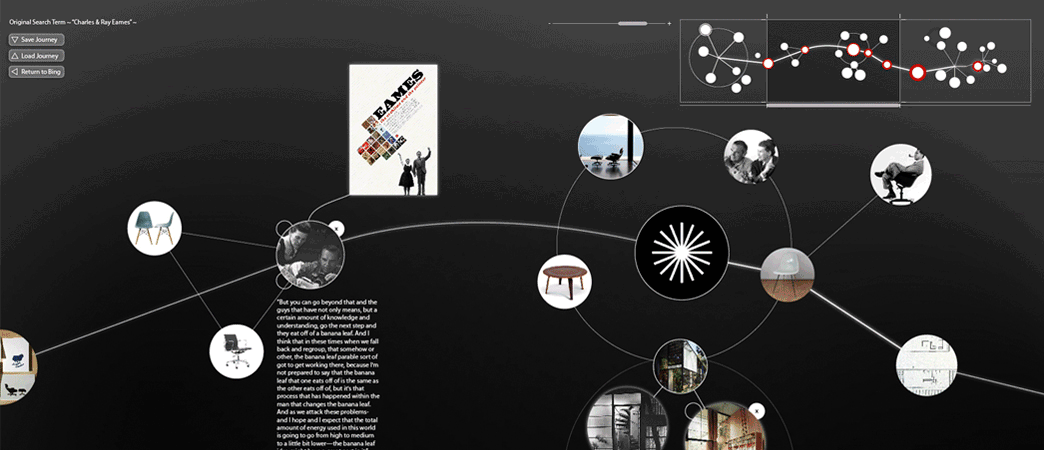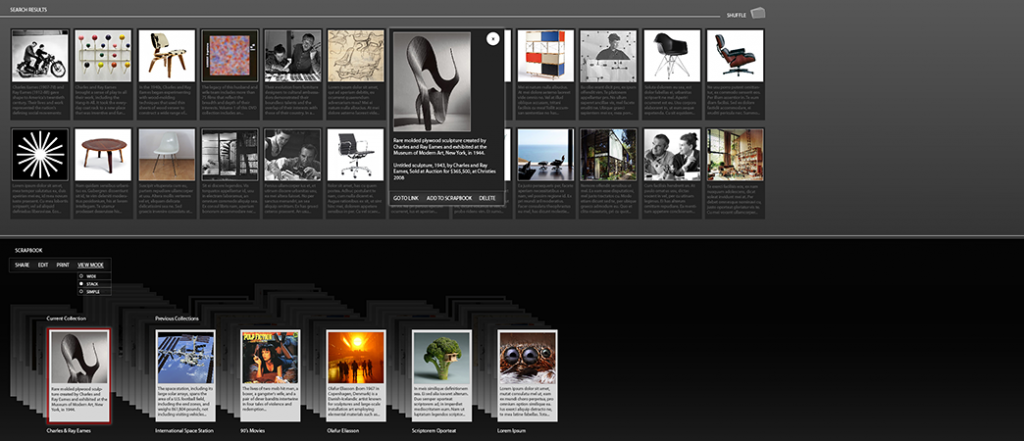
When we think of the experiences that search engines are designed to support, criteria such as speed and efficiency instantly come to mind. In this project, we wanted to focus on something different: how the richness of web use, and the activities in which search features, point to other human values to design for. These include systems that support:
- Spending rather than saving time on the web
- Enjoying the journey as much as the destination
- Discovering something new rather than finding the “right answer”
- Pushing content of interest rather than having users pull information
- Recognising how the web is intertwined with everyday life.
Some of the research and design that we undertook as part of this project are detailed below.
Five Modes of Web Use
Most tools for searching the web are built around the idea of purposeful or task-driven web use, where people seek out the answers to questions they have, or gather information for a particular information need. Our fieldwork suggests that while this is obviously an important aspect of web use, there are other modes in which people engage with the web. We identified five modes of web use:
Purposeful Use. When users wish to accomplish a task quickly and efficiently. They may fire up a laptop or turn on their mobile phone in order to do so.
Opportunistic Use. Using the web as a form of past time. Rather than going online to accomplish some task, users look for things to do ‘while they are there’, calling to mind curiosities and interests.
Orienting. When users browse a routine set of sites to ‘warm up’ for the day or settle in at work, for example. This tends to involve looking through roughly the same sites in the same order at the same times during the day.
Respite. When users look to a core set of sites, such as the news, webmail or social networks, for a short period of time (maybe only seconds), as a way of breaking from other activities.
Lean-Back Internet. Using the Web as a conduit to stream media, such as radio, video or games.
Domesticating Search
One of the strengths of the web is its ubiquity; it can increasingly be accessed anywhere and at any time. But different locations have different qualities, and it is worth considering how the web might be designed to fit a specific place. In collaboration with Aalto University’s School of Arts, Design and Architecture, we have developed a number of concepts that explore how to design web-connected artefacts specifically for the home. These are Manhattan, a tangible interface that supports location-based search, Tokens, a system that supports physical bookmarking, and Hole in Space, which displays live web content about a remote, but highly meaningful, place.

New Ways of Interacting with the Web
Seeds
Seeds is a concept that explores what it might mean to choose a search term that represents a long-term interest, and for the search to grow as the interest evolves. The user plants a ‘seed’ representing a search query, which grows and takes an organic form as new content appears. The idea is that for deeply-held interests, about which the user knows a great deal, the top 10 links may not be significant. What is germane is content that is new.

Pebbles
Pebbles is a way of picturing and encapsulating search journeys so you can get pleasure from the voyage, as well as the destination. Search is reimagined as travelling, as a process that the user experiences. In this concept, each pebble opens up a number of new paths, which the user can travel along or choose to ignore. There is no end-point or goal; instead, the technology facilitates meandering and a sense of discovery.

Cards
This prototypes presents the results of web searches as ‘cards’, which package up the search results. Each card is unique, in that it combines images and text returned from the search in new ways. The cards can be kept or given to others.

SketchStorm
SketchStorm is a prototype application that was developed to facilitate designers in the early ideation stages of the design process. It supports common ideation practices including sketching, image search and image collection, and allows the user to combine these. For example, the designer can initiate new searches around the canvas while sketching in the centre, or can have the results of a search query display on the periphery of their screen, as they work with other tools.
People
Siân Lindley
Senior Principal Research Manager
Richard Banks
Principal Design Manager
Abigail Sellen
Distinguished Scientist and Lab Director

